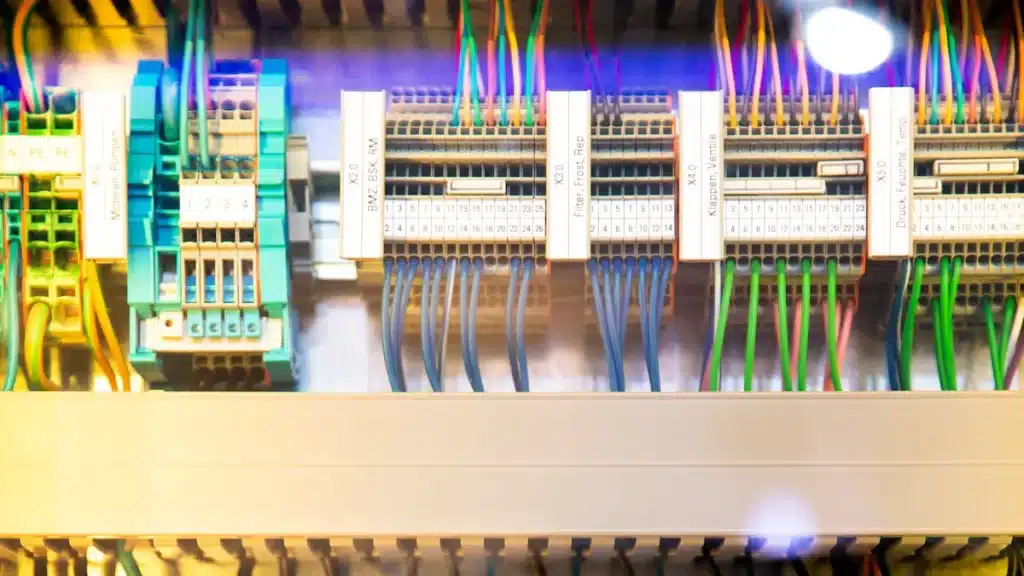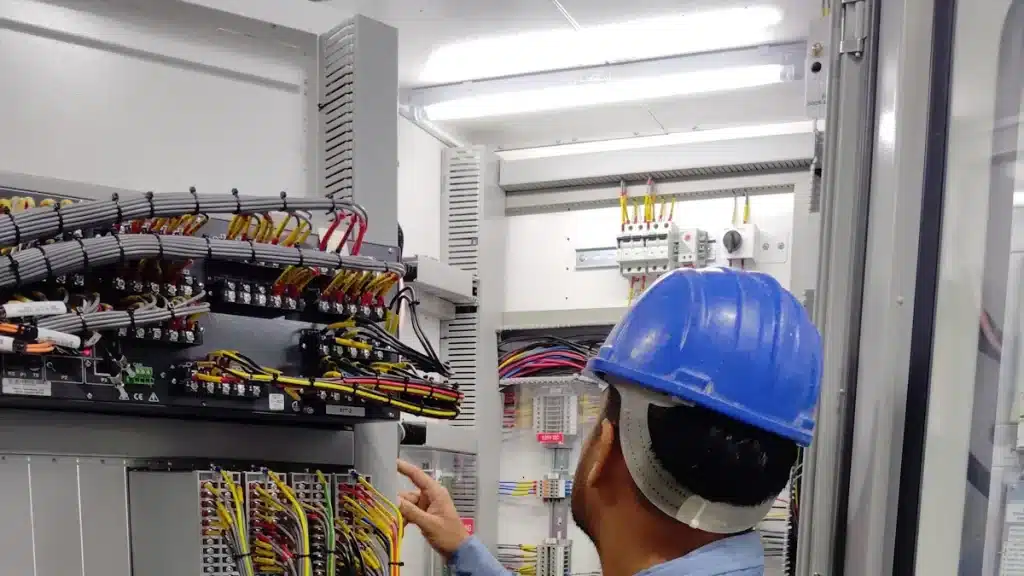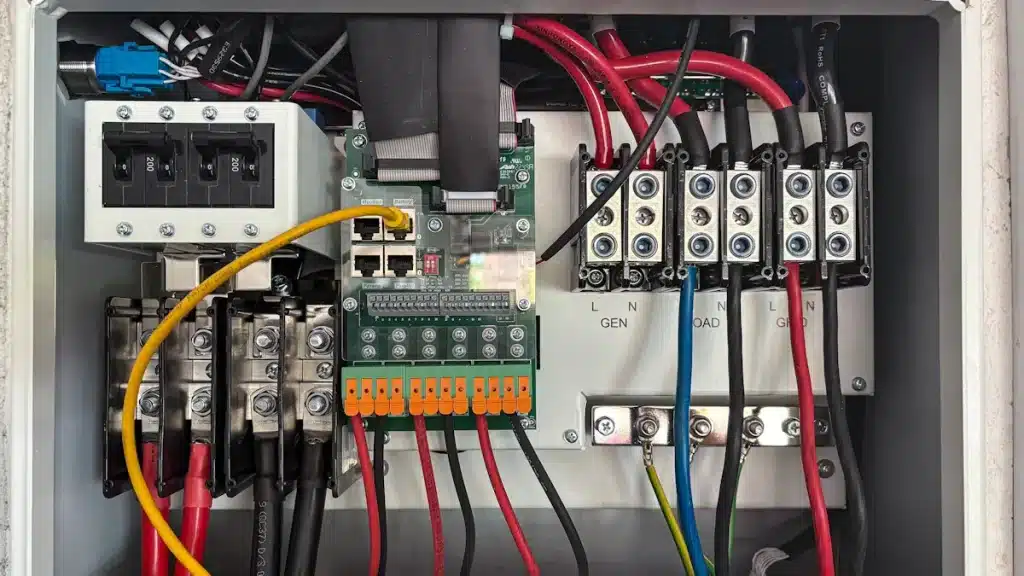
Industrial safety controller boards are crucial for keeping workers safe. They also help factories run smoothly. As safety rules and technology improve, these controller boards matter even more. By 2025, the safety market will grow to $7.7 billion. This growth happens because industries need better safety systems. Rules in places like the US and Europe are changing too. Certified industrial safety controller boards lower risks at work and follow safety laws. Top choices include Rockwell GuardLogix, Siemens S7-1500F, Emerson DeltaV SIS, Schneider Modicon M580 Safety, and ABB AC500-S.
Key Takeaways
Look for safety certifications like ISO 13849 and SIL 3. These prove the board is safe and lowers workplace dangers.
Make sure it works with your current systems. Check hardware and software to avoid expensive changes and keep things running well.
Think about how well it works and lasts. Pick boards that do tasks quickly and come with warranties for extra protection.
Check if it saves money over time. Durable boards cost less to fix or replace later.
Choose boards that can grow with your business. This helps you use new tools and handle industry updates easily.
Key Factors to Think About
Safety Certifications and Standards
When picking safety boards, focus on safety certifications. These prove the boards meet strict rules and are safe to use. Look for certifications like ISO 13849, IEC 61508, or UL. These show the board passed tough tests for safety and reliability.
If the board doesn’t meet standards, problems can happen. Different industries, like energy or manufacturing, have special safety needs. Choosing a certified board lowers risks and follows safety laws. This is key for managing risks and keeping workers safe.
Working with Current Systems
Safety boards should work well with your current setup. Before buying, check your hardware and software. Make sure the board supports the tools you already use. This avoids expensive upgrades and keeps things running smoothly.
Good supply chain security also helps with compatibility. Trusted brands give better guides and support. This makes it easier to add the board to your system. Also, think about how it fits with other parts in your supply chain. A good match reduces downtime and keeps work moving.
Performance and Dependability
A safety board must work well and be dependable. It should handle different tasks without breaking down. Strong boards do hard jobs quickly and keep things running safely. Dependable boards lower the chance of failures that could cause danger.
Check the board’s speed and memory size. These affect how well it works in tough places. Reliable boards often come with warranties and help services. Picking a strong board improves safety and makes work more efficient.
Cost-Effectiveness and ROI
When picking safety boards, think about cost and value. Good boards may cost more at first but save money later. They lower repair costs and keep machines working longer. This helps your business make more money.
Check the Total Cost of Ownership (TCO) before buying. TCO includes all costs, from buying to throwing it away. Look at how long the board lasts and how strong it is. Long-lasting boards mean fewer replacements and steady performance.
ROI, or return on investment, is also important. Compare the board’s price to the benefits it gives. A strong board reduces downtime and prevents machine problems. This saves money and keeps work running smoothly.
Think about risks too. What happens if the board fails? A reliable board lowers these risks and is a smart buy for your business.
Scalability and Future-Proofing
Factories change fast, so your board must keep up. A scalable board can grow with your needs. Pick one that’s easy to upgrade or works with new tools. This saves money on future replacements.
Future-proofing matters too. Boards with advanced features handle new trends and rules. Some boards work with the latest automation tools. This keeps your factory ready for the future.
Think about how the board fits into your supply chain. A scalable board makes everything run better and faster. By choosing a board that grows with your business, you save money and stay ahead.
Comparison of Top Industrial Safety Controller Boards in 2025

Rockwell Automation GuardLogix
The Rockwell Automation GuardLogix board is known for its safety features. It meets strict safety levels like SIL CL 2/PLd and SIL CL 3/PLe. Its dual-controller design ensures strong safety, making it great for risky jobs.
This board has flexible memory options. Standard memory ranges from 3 MB to 20 MB. Safety memory ranges from 1.5 MB to 6 MB. These options help handle tough safety tasks easily. It also supports 100 to 250 EtherNet/IP nodes. This allows smooth communication in your industrial system.
The board works fast and reacts quickly to dangers. Its conformal coating protects it in tough environments. You can mix safety and standard I/O for more flexibility. Networked safety with motion improves how well it works.
Specification | Details |
|---|---|
Safety Levels | SIL CL 2 / PLd with primary controller |
SIL CL 3 / PLE with primary controller plus safety partner | |
Memory Options | Standard: 3...20 MB |
Safety: 1.5...6 MB | |
Communication Capabilities | 100...250 EtherNet/IP nodes |
Additional Features | Optimized for faster safety reaction time |
Conformal coated options for harsh environments | |
Mix and match safety and standard I/O | |
Networked safety functions with motion |
Tip: If you need a reliable and flexible board, choose Rockwell Automation GuardLogix.
Siemens S7-1500F
The Siemens S7-1500F board uses advanced technology and is easy to use. It fits into current systems without needing big changes. Its modular design lets you expand as your business grows.
This board focuses on safety and performance. It supports SIL 3 safety levels, meeting global standards. Its smart diagnostics find problems fast and keep systems safe. High-speed processing ensures smooth work in tough conditions.
Siemens made this board ready for the future. It works with new automation tools to keep you updated. Its TIA Portal software makes setup and programming simple and quick.
Note: Siemens S7-1500F is perfect for businesses wanting safety and advanced tools with room to grow.
Emerson DeltaV SIS
The Emerson DeltaV SIS board combines simplicity with strong features. It is made for process industries where safety is very important. Its built-in safety and control system make work easier and less complicated.
This board supports SIL 3 safety levels, meeting strict rules. Its distributed design allows safety functions in many locations. This is helpful for large operations with different safety needs.
Emerson focuses on making the board easy to use. The DeltaV SIS is simple to set up and maintain. This reduces downtime and saves money. Its user-friendly interface helps you manage safety systems easily.
Tip: If your industry needs a safety board for process tasks, Emerson DeltaV SIS is a dependable choice.
Schneider Electric Modicon M580 Safety
The Schneider Electric Modicon M580 Safety board is unique and strong. It is a top pick for industries needing great safety in 2025. This board fits easily into current systems, so no big changes are needed.
The Modicon M580 Safety board meets SIL 3 safety levels. This means it follows global safety rules. Its Ethernet setup allows fast and steady communication. This is helpful for big factories where quick data sharing is key. The board also has built-in tools to block cyber threats, keeping systems safe.
A big plus is that it handles safety and regular tasks together. This makes things simpler and more efficient. It also has smart tools to find and fix problems fast. These tools cut downtime and keep work going smoothly.
This board is made to grow with your business. You can add new parts without stopping work. Its modular design makes it easy to upgrade. This makes it a smart choice for businesses planning for the future.
Tip: If you want a flexible and secure board that grows with you, the Schneider Electric Modicon M580 Safety is a great pick.
ABB AC500-S
The ABB AC500-S board is a strong and reliable safety tool for 2025. It is built to meet strict safety needs and offers great performance. This board works well in places where safety is very important.
The AC500-S board meets SIL 3 safety standards, offering top protection. Its tough design makes it perfect for harsh conditions. You can change its setup to fit your needs, thanks to its modular design.
This board has advanced safety features like emergency stop and safe speed control. These features help prevent accidents and protect equipment. It also connects easily to different systems using many communication options.
The board is simple to program and maintain. ABB designed it to meet today’s safety needs and prepare for future challenges. Its scalable design and smart features make it a good investment for improving safety.
Note: The ABB AC500-S board is a solid choice for industries that need safety and a flexible, high-performing solution.
Use Case Recommendations

Best Boards for Manufacturing Applications
In factories, safety and speed are very important. You need boards that work fast and keep workers safe. The Rockwell Automation GuardLogix and Siemens S7-1500F are great options. They have strong safety features and fit well with current systems.
The GuardLogix board has two controllers for better safety in risky jobs. It can handle both safety and regular tasks, making it flexible for different setups. The Siemens S7-1500F is easy to expand as your business grows. Its smart tools find problems quickly, reducing delays.
Tip: Pick boards with top safety certifications like SIL 3 or PLe. These meet rules and protect workers.
Best Boards for Energy and Utilities
Energy and utility jobs need boards that work in tough places. They must also keep systems running without stopping. The Schneider Electric Modicon M580 Safety and Emerson DeltaV SIS are great picks.
The Modicon M580 Safety board has tools to stop cyberattacks, keeping systems safe. Its Ethernet setup allows quick data sharing, which is key for big energy systems. The Emerson DeltaV SIS is simple to use and has a design that spreads safety tasks across locations. This is helpful for large networks.
Both boards meet SIL 3 safety rules, following global standards. They handle safety and control tasks at the same time, making work smoother.
Note: Choose boards with good communication tools. This helps them fit well into your supply chain.
Best Boards for Robotics and Automation
Robotics and automation need boards with exact control and strong safety. The ABB AC500-S and Siemens S7-1500F are top choices for these tasks.
The AC500-S board has emergency stop and safe speed features. These help avoid accidents in robotic systems. Its modular design lets you adjust it for specific needs. The Siemens S7-1500F works fast and supports new automation tools, ensuring smooth operations.
Here’s a quick look at key safety standards for robotics and automation:
Standard/Specification | Description |
|---|---|
UL 3100 | Automated Mobile Platforms (AMPs) |
ANSI/UL 1740 | Robots and Robotic Equipment |
ISO 10218 | Robots and Robotic Devices - Safety Requirements |
IEC 61508 | Functional safety of safety-related systems |
Tip: Make sure your board follows rules like ISO 10218 and IEC 61508. This ensures safety and good performance in robotic systems.
Best Boards for High-Risk Environments
High-risk places need safety boards that are reliable and strong. These boards must work well in tough conditions and keep workers safe. Picking the right board means knowing workplace dangers and finding ways to reduce risks.
Features to Look For
Safety certifications like SIL 3 or PLe are very important. They show the board meets strict global safety rules. Look for boards with emergency stop, safe speed control, and smart diagnostics. These features help stop accidents. Modular designs let you adjust the board to fit your needs. Conformal coatings protect against dust, water, and extreme heat or cold.
Risk Assessment Insights
Risk assessments help you choose the best board. Use these steps to find dangers and understand risks:
Check the workplace for unsafe areas.
Talk to workers about risks they face daily.
Study past accident reports for common problems.
Compare safety rules with actual work practices.
Look at injury records for patterns.
These steps show the challenges of your workplace. They help you pick boards that solve these problems.
Statistical Approaches to Risk
Risk studies use numbers and opinions to check safety needs. Here’s a quick guide:
Type of Assessment | Description |
|---|---|
Use numbers to get approval from managers. | |
Qualitative Approaches | Focus on opinions to understand worker and team concerns. |
Asset-Based Assessments | Look at risks to important equipment or systems. |
Threat-Based Assessments | Focus on stopping cyber threats and other dangers. |
These methods give a full view of risks. They help you pick boards that match your safety goals.
Recommended Boards
The ABB AC500-S and Schneider Electric Modicon M580 Safety boards are great for risky jobs. The AC500-S has emergency stop and safe speed features for dangerous places. Its modular design makes it flexible, and its tough build handles harsh conditions. The Modicon M580 Safety board is great for stopping cyberattacks. It also shares data quickly, which is key for high-risk industries.
Tip: Pick boards with smart diagnostics and modular designs. These features make boards more reliable and reduce downtime.
Picking the right industrial safety controller boards needs careful thought. Look for boards with safety certifications. These show they meet global safety rules. Choose boards that work with your current systems. This avoids problems and keeps things running smoothly. Think about how well the board works and if it’s worth the cost. Both are important for keeping your business efficient.
Talk to experts to make smart choices. For example, AFRY has over 500 specialists in energy. They have 2000 years of combined experience. They’ve helped with over 80 deals worth nearly €12 billion. Their advice can help with growth and smart investments. Also, pick boards that can grow with your needs. This helps you keep up with trends like digital tools and eco-friendly practices. A scalable board keeps your supply chain strong and ready for change.
Tip: Working with experts and planning ahead improves safety and success.
FAQ
What does an industrial safety controller board do?
It keeps workplaces safe by managing and watching machines. It stops accidents by acting quickly when dangers appear. These boards also help follow safety rules, lowering risks and making work smoother.
How can I tell if a safety controller board meets global rules?
Check for certifications like ISO 13849, IEC 61508, or SIL 3. These show the board passed strict safety and reliability tests. Always read the product details to confirm this before buying.
Can I use a new safety controller board with my current system?
Yes, most modern boards are made to fit well. Look at the board’s communication systems, like EtherNet/IP or PROFINET, to see if they match yours. Follow the maker’s guide for setup help.
Which industries gain the most from safety controller boards?
Industries like factories, energy, utilities, robots, and risky jobs benefit a lot. These boards improve safety, cut delays, and meet special industry rules. Pick a board that fits your job’s needs.
How can I make sure my safety controller board lasts for the future?
Choose a board that can grow and change. Look for features like updates, new tech support, and advanced tools. This helps your board stay useful as industries change.
Tip: Talk to experts to pick boards that grow and fit well with your system.